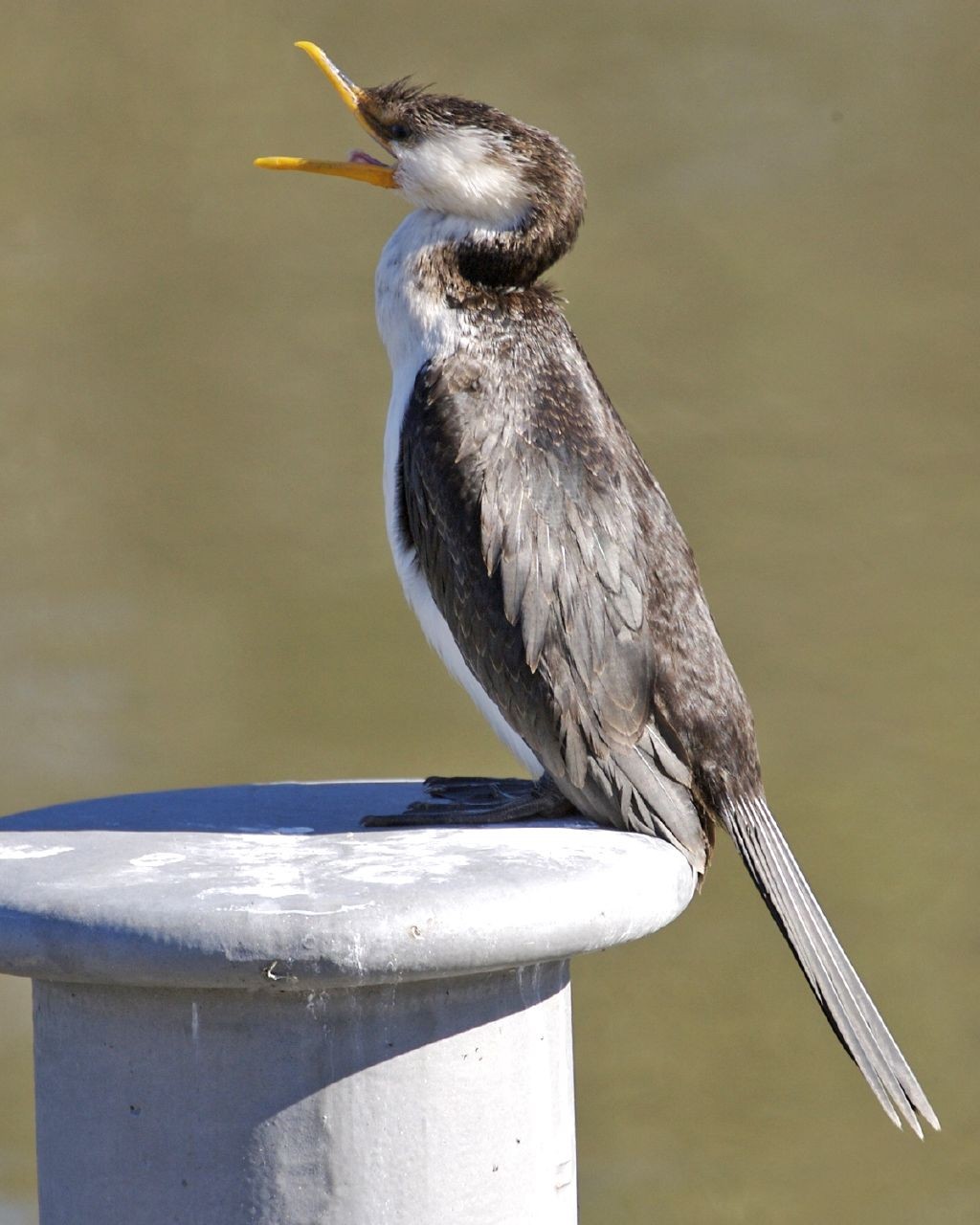Little Pied Cormorant
A species of Lesser Cormorants Scientific name : Microcarbo melanoleucos Genus : Lesser Cormorants
Little Pied Cormorant, A species of Lesser Cormorants
Botanical name: Microcarbo melanoleucos
Genus: Lesser Cormorants
Content
Description People often ask General Info
 Photo By Lip Kee , used under CC-BY-SA-2.0 /Cropped and compressed from original
Photo By Lip Kee , used under CC-BY-SA-2.0 /Cropped and compressed from original Description
The little pied cormorant is a small cormorant measuring 56–58 cm (22–23 in) with a shorter 3 cm (1.2 in) bill and longer tail than the little black cormorant; it has a small black crest. It is found in two morphs in New Zealand. Subspecies melanoleucos and brevicauda are found only in a pied morph, black (with a slight green tinge) above and white beneath. This is also found in subspecies brevirostris, but in this form the melanistic morph is much more common. In this form the entire plumage is black with a greenish tinge except for the sides of the head, chin, throat and upper neck; the bill is yellow with black on top. Intermediate forms are also found. The pied form is glossy black above with white face, underparts and thighs. The bill and bare skin around the face are yellow. In both forms the legs and feet are black. The pied form is rare in New Zealand, and is most common there in Northland, where it makes up one in every four birds or so. Chicks have dark brown down, with pied morph having patches of paler down. Immature birds are a dull blackish brown, with pied morph birds having paler underparts. The little pied cormorant makes a low cooing during courtship. Similar species include the black-faced cormorant (slightly larger) and the Australian pied cormorant (substantially larger). 
Size
65 cm
Nest Placement
Tree
Feeding Habits
Little Pied Cormorant consumes a diet mainly of fish, a significant proportion of crustaceans, as well as eels and insect larvae. It forages alone, diving in shallow waters to benthic regions. Little Pied Cormorant has short dive times, brings prey to surface to re-orient before swallowing, and is occasionally kleptoparasitized by gulls.
Habitat
Little Pied Cormorant typically inhabits various wetlands including swamps, lakes, lagoons, and rivers. It has a preference for fresh waters but can also be found in coastal environments such as estuaries, mangrove swamps, and sheltered harbors. The species is highly adaptable, residing in both natural and artificial water bodies, from large bodies of water to ornamental ponds within urban landscapes. Breeding sites generally require the presence of nearby trees or shrubs overhanging water.
Dite type
Piscivorous
People often ask
General Info
Feeding Habits
Bird food type
Distribution Area
The species ranges across New Zealand, from Stewart Island to Northland, and across mainland Australia (although not in the arid interior of the west of the country) and Tasmania and Indonesia. Widespread and common, it lives near bodies of water such as swamps, lakes, lagoons, estuaries and the coastline. 
Species Status
Not globally threatened.
Scientific Classification
Phylum
Chordates Class
Birds Order
Gannets and Relatives Family
Cormorants Genus
Lesser Cormorants Species
Little Pied Cormorant